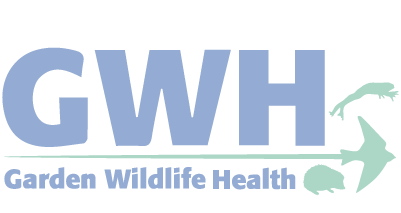Agent
Dermocystid parasites are single-celled parasitic organisms belonging to a group of organisms called dermocystid protozoa that can only be differentiated using molecular genetic methods.
Until recently, dermocystid parasites infecting amphibians were classified into two genera, Amphibiocystidium and Amphibiothecum; currently, however, they are assigned to six genera (Amphibiocystidium, Dermocystidium, Dermosporidium, Dermotheca, Sphaerothecum, and Valentines).
Species affected
Diseases caused by dermocystid parasites have been reported in a range of amphibians, including frogs, toads, newts and salamanders. Evidence suggests that some amphibian species may be more susceptible to infection than others, but all amphibians should be considered at risk. Representatives of these genera have been documented most frequently in European anurans (frogs & toads) and urodeles (newts & salamanders).
Signs of disease
Infection with dermocystid parasites can cause a range of disease outcomes, from mild disease and recovery to death. Infection commonly results in the development of nodular skin lesions that are visible to the naked eye. These vary from small blisters to multiple nodules and large tumour-like lesions, which can become red and ulcerated. The skin lesions can occur anywhere on the body, including the head, tail and legs (see Figures 1 and 2). Additionally, dermocystid parasites may infect the liver, in which they can form tumour-like lesions of varying sizes.
Figure 1. Alpine newt (Ichthyosaura alpestris) infected with Amphibiocystidium. Long black arrows – ulcerative lesions on back. Short white arrows – coalescent blisters at base of tail. Photo credit: Zoological Society of London.
Figure 2. Palmate newt (Lissotriton helveticus) infected with Amphibiocystidium. Long black arrows – single blisters on body and tail. Short white arrows – coalescent blisters on body. Photo credit: Shaun Denney.
Disease transmission
The life-cycles and means of transmission of these dermocystid parasites are unknown.
Distribution
Disease consistent with Amphibiocystidium infection was first described in Europe at the beginning of the 20th Century in frogs and newts and has since also been found in North America. There has been an increase in the number of reports of amphibians infected with dermocystid parasites in recent years in Great Britain and elsewhere in Europe, and recently salamanders affected by a Dermotheca species have been found in the mid-western United States. It is possible that this increase in reporting might be due to the large increase in the number of people studying amphibian diseases.
In Great Britain, dermocystid parasitic diseases are suspected to be present in both native and introduced species of newts in multiple sites across the country and their distribution and impact are currently under investigation.
Risk to human health
Dermocystid parasites are known to infect amphibians and fish, and there is no known risk to human health.
Risk to domestic animal health
Dermocystid parasites are known to infect various species of amphibian. As such, pet amphibians should be regarded as being susceptible to infection.
Diagnosis
A tentative diagnosis of dermocystid parasitic disease can often be made based on the appearance of the lesions found in affected amphibians. However, a definitive diagnosis and differentiation between an infection with Amphibiocystidium and other dermocystid parasites can only be made using specialist laboratory tests.
If you wish to report finding a dead amphibian, or signs of disease in amphibians, please visit www.gardenwildlifehealth.org. Alternatively, if you have further queries or have no internet access, please call the Garden Wildlife Health vets on 0207 449 6685.
Control and prevention
There are no known effective treatments for dermocystid parasitic diseases. The movement of infected animals should be avoided to help prevent the unintentional spread of the parasite to new areas.
Further information
More advice on amphibians in your garden can be found on the Garden Wildlife Health website www.gardenwildlifehealth.org.
Scientific publications
Pascolini R, Daszak P, Cunningham AA, Tei S, Vagnetti D, Bucci S, Fagotti A, Di Rosa I (2003) Parasitism by Dermocystidium ranae in a population of Rana esculenta complex in Central Italy and description of Amphibiocystidium n. gen. Diseases of Aquatic Organisms 56(1):65-74. doi: 10.3354/dao056065.
Raffel TR, Bommarito T, Barry DS, Witiak SM, Shackelton LA (2008) Widespread infection of the Eastern red-spotted newt (Notophthalmus viridescens) by a new species of Amphibiocystidium, a genus of fungus-like mesomycetozoan parasites not previously reported in North America. Parasitology 135(2):203–215. doi:10.1017/S0031182007003708.
Duffus ALJ, Cunningham AA (2010) Major disease threats to European amphibians. The Herpetological Journal 20(3):117–127. https://www.ingentaconnect.com/content/bhs/thj/2010/00000020/00000003/art00002.
González-Hernández M, Denoël, M, Duffus AJL, Garner TWJ, Cunningham AA, Acevedo-Whitehouse K (2010) Dermocystid infection and associated skin lesions in free-living palmate newts (Lissotriton helveticus) from Southern France. Parasitology International 59(3):344–350. doi:10.1016/j.parint.2010.04.006.
Fiegna C, Clarke CL, Shaw DJ, Baily JL, Clare FC, Gray A, Garner TWJ, Meredith AL (2017) Pathological and phylogenetic characterization of Amphibiothecum sp. infection in an isolated amphibian (Lissotriton helveticus) population on the island of Rum (Scotland). Parasitology 144(4):484-496. doi.org/10.1017/S0031182016001943
Borteiro C, Gobel N, Kolenc F, Laufer G, Martínez Debat C, Ubilla M (2018) Skin-mates or neighbors? A seasonal study of amphibian chytrid and dermocystid infection in Boana pulchella (Anura: Hylidae). Cuadernos de Herpetología, 32:101-108. doi:10.31017/CdH.2018.(2018-012)
Adamovicz L, Woodburn DB, Herrera SV, Low K, Phillips CA, Kuhns AR, Crawford JA, Allender MC (2020) Characterization of Dermotheca sp. infection in a midwestern state-endangered salamander (Ambystoma platineum) and a co-occurring common species (Ambystoma texanum). Parasitology, 147(3):360-370. doi.org/10.1017/S0031182019001677
Acknowledgements
Current funding for the GWH comes in part from Defra, the Welsh Government and the Animal and Plant Agency (APHA) Diseases of Wildlife Scheme (DoWS) http://apha.defra.gov.uk/vet-gateway/surveillance/seg/wildlife.htm; and from the Esmée Fairbairn Foundation, the Universities Federation for Animal Welfare and the Garfield Weston Foundation.
Disclaimer
This fact sheet was produced by Garden Wildlife Health (GWH) for information purposes only. The GWH will not be liable for any loss, damage, cost or expense incurred in or arising by reason of any person relying on information in this fact sheet.
Date of factsheet update:
May 2020


